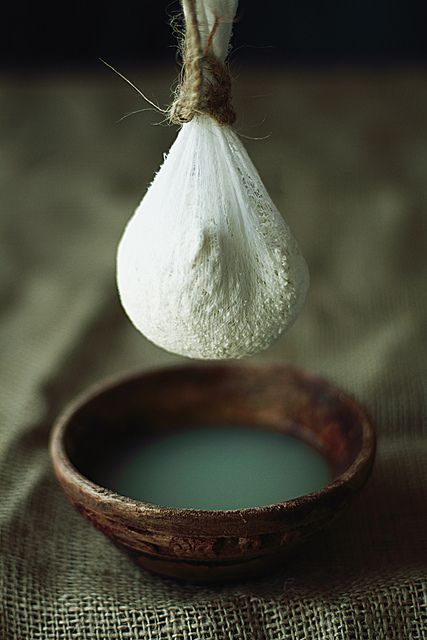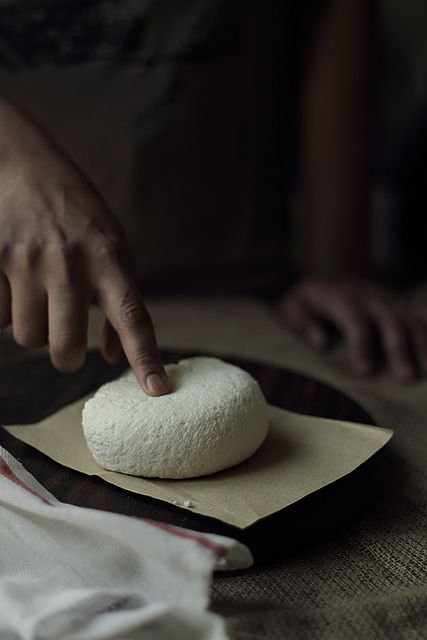Popular on Food52
22 Comments
Shalini A.
July 31, 2015
I am from India, and paneer is a staple for us.
You can actually try boiling the milk if it does not split and add more sourness in the form of
-lemon
-vinegar
-sour yoghurt(should be left out for a day to develop a tanginess)
The way I usually way it down to get creamy soft paneer is
Just strain the curd, dump it in a cheesecloth, rinse and immediately weight it down with the heaviest object that you can find- I usually use my mortar and pestle.
It takes about 10-15 minutes to make paneer.
Whole milk or 2% is just fine. Sometimes if there are additives in milk it doesn't form curd easily.
In India it is pasteurised but not homogenised so it separates really fast and well.
Hope this helps!!
You can actually try boiling the milk if it does not split and add more sourness in the form of
-lemon
-vinegar
-sour yoghurt(should be left out for a day to develop a tanginess)
The way I usually way it down to get creamy soft paneer is
Just strain the curd, dump it in a cheesecloth, rinse and immediately weight it down with the heaviest object that you can find- I usually use my mortar and pestle.
It takes about 10-15 minutes to make paneer.
Whole milk or 2% is just fine. Sometimes if there are additives in milk it doesn't form curd easily.
In India it is pasteurised but not homogenised so it separates really fast and well.
Hope this helps!!
tigerlille
April 10, 2013
I don't know, but would be interested in finding out. What a terrible allergy, don't kno what I would do withoht citrus.
Alicia V.
April 10, 2013
When using the yogurt method, is it the same process? Tablespoon at a time? My nephew who is HIGHLY allergic to citrus fruit recently declared himself a vegetarian. Trying to find recipes to help out his mums.
Am9
March 11, 2013
This is the second time I have tried... still no curds...Help???
Renée (.
March 11, 2013
Try giving it a boost with about 1/2 cup of all-natural plain yogurt (not Greek-style) in addition to the lemon juice.
Renée (.
March 11, 2013
I don't know about "again", but if you don't get curds with the lemon juice alone, try stirring in 1/2 cup natural, plain yogurt while cooking. The ingredients panel on the yogurt should only list milk, like Dannon.
Am9
March 11, 2013
Ok, so I cooked it, added the lemon juice and nothing. So I should cook it again adding in the yogurt, then no lemon juice for the second time?
Am9
March 11, 2013
What I've gotten every time I've tried is a thick sludge on the bottom of the pan, but no curds.
Renée (.
March 12, 2013
Honestly, I don't know what to tell you. What kind of milk are you using? I only use whole milk to make paneer. Skim or 1% won't work. Someone else here said they've used 2%, but I've never tried it.
fen1027
March 11, 2013
this is pretty similar to ricotta except for the pressing of the cheese right?
Mary A.
March 11, 2013
I just returned from three weeks in India and viola! a recipe for the paneer I so loved and ate at every opportunity. I look forward to trying this recipe out.
Elodie B.
March 10, 2013
Absolutely stunning photographs! I've just added your blog to my rss feeds. Thank you for sharing your recipe.
tigerlille
March 10, 2013
I've always made my paneer with 2% milk with excellent results, but I wouldn't advise going any lower.
Renée (.
March 8, 2013
I did this about 2 years ago. I still make paneer pretty regularly. If you love Indian food, try this recipe using the finished product: http://flamingomusings.com/2010/07/kaju-matar-paneer-indian-cheese-peas.html
Madhuja
March 8, 2013
Placing the paneer between two cutting boards is such a neat idea! I always have trouble draining my paneer, but I think your tip will solve that problem! Thanks! :)
Shalini
March 8, 2013
Woderful, Kulsum. Thanks for this simple yet thorough explanation of a favourite food.



/3f36c95d-40b7-4fe3-96e6-3e8f1c3cdda1--paneer-in-spinach-sauce_Colin-Price.jpg)
/c62b5b2b-364e-4e50-afa7-7b0cff1f4031--122010F_500.JPG)
/b236b3a2-732d-44f1-90ca-963a582f2a6a--2016-0412_palak-paneer_bobbi-lin_21601.jpg)
/16d26a5c-1d93-4dde-b393-0457c5a06c4d--Pea_Paneer_Curry_c-Ghazalle_Badiozamani.jpg)

See what other Food52 readers are saying.